#Julie Lemberger
Photo

Andy Stott: Too Many Voices (Modern Love, 2016)
Photography by Julie Lemberger.
#andy stott#too many voices#julie lemberger#photography#album covers#graphic design#artists#websites
11 notes
·
View notes
Text
THIS DAY IN GAY HISTORY
based on: The White Crane Institute's 'Gay Wisdom', Gay Birthdays, Gay For Today, Famous GLBT, glbt-Gay Encylopedia, Today in Gay History, Wikipedia, and more … March 14



Pi Day is a holiday held to celebrate the mathematical constant π (pi). Pi Day is observed on March 14th (3/14), due to π being roughly equal to 3.14. The Pi Minute is also sometimes celebrated on March 14 at 1:59 p.m. If π is truncated to seven decimal places, it becomes 3.1415926, making March 14 at 1:59:26 p.m. Pi Second (or sometimes March 14, 1592 at 6:53:58 a.m.).
The first Pi Day celebration was held at the San Francisco Exploratorium in 1988, with staff and public marching around one of its circular spaces, and then consuming fruit pies; the museum has since added pizza pies to its Pi Day menu. The founder of Pi Day was Larry Shaw, a now retired physicist at the Exploratorium who still helps out with the celebrations. The Massachusetts Institute of Technology often mails out its acceptance letters to be delivered to prospective students on Pi Day.
Some also celebrate Pi Approximation Day in addition to Pi Day, which can fall on any of several dates:
April 26: The Earth has traveled two radians of its orbit by this day (April 25th in leap years); thus the entire orbit divided by the distance traveled equals pi
July 22: 22/7 in the more common day/month date format, an ancient approximation of pi
November 10: The 314th day of the year (November 9 in leap years)
December 21 1:13 p.m.: The 355th day of the year (December 20 in leap years), celebrated at 1:13 for the Chinese approximation 355/113
On Pi Day, 2004, Daniel Tammet calculated and recited 22,514 decimal digits of pi.
Finally, Albert Einstein was born on Pi Day, 1879.


1864 – Alfred Redl (d.1913) was an Austrian officer who rose to head the counter-intelligence efforts of Austria-Hungary. He was one of the leading figures of pre-World War I espionage. His term in office was marked by innovation, and he used very advanced technology for the time to ensnare foreign intelligence agents. But he was also a spy for the Russians.
Alfred Redl was born in Lemberg, Galicia. His father was a railway clerk, and Alfred was the ninth child in a poor family that would grow even larger. On March 14, 1881, his seventeenth birthday, Redl joined the Austro-Hungarian Army. He was a good student and eventually won a place in the Imperial War College. Whereas others chafed under the discipline of the all-male army, Redl thrived in the homosocial environment. He made the army his true home.
On October 1, 1900, he joined the Counterintelligence Corps. He became responsible for recruiting, training, and dispatching agents for spy missions. In 1907, Redl was appointed Chief of Intelligence for the Army. During a tenure that lasted until 1912, he was known as an innovator: he was among the first to record conversations (on early wax cylinders), to use secret cameras, to adopt a systematic policy to intercept mail, to dust for fingerprints, and to "shadow" suspects. Redl also spearheaded a collaborative exchange of intelligence with Germany and trained an entire generation of Austro-Hungarian spymasters.
Redl's career had two extreme handicaps: money problems and the need to hide his sexuality. The army did not pay its officers well, but nevertheless expected them to live at a level befitting their status. Redl, as it happened, had expensive tastes in everything. His everyday financial life was killing debt.
The stress of Redl's situation was heightened because he was homosexual and had to hide that career-ending fact at all costs. One method he used to deflect suspicion of his sexual orientation during his time in Kazan was to pay court to a (supposedly) married woman. Her reluctance to commit while "married" and Redl's need for a "safe" woman made for a perfect match.
When the Russians discovered Redl was a homosexual, he became doubly vulnerable. The Russians moved in to offer a deal for money and silence. The homosexual, debt-ridden Redl was blackmailed (and bribed) into spying for Russia and betraying his country, his Army, and his Emperor.
Redl was already a veteran of a long and active sexual life when he met and fell in love with Stephan Hromodka. A handsome young cavalry officer, Hromodka had tastes and requirements as extravagant as Redl's and proved to be an expensive obsession. Although Redl and Hromodka both explained that their extravagant lifestyles were made possible by family money, Redl had to sell more and more information to the Russians to finance the arrangements.
When the couple attended public and official functions, Redl introduced Hromodka as his nephew. No one ever challenged him. If anyone had become suspicious about Redl's marital status and the constant presence of a handsome young cavalry officer who might or might not be his nephew, he could cite army regulations: officers had to obtain permission to marry, and there was a long waiting list because, at any one time, half the officers of the General Staff had to be single.
When Redl was transferred to Prague, Major Maximilian Ronge, one of his protégés, became head of counterintelligence in Vienna. Redl had trained Ronge in every technique he had developed and adopted.
Early in April 1913, Ronge received word from his counterpart in the German General Staff about a suspicious letter. Addressed to Herr Nikon Nizetas, c/o General Delivery, Vienna, the letter, unclaimed in Vienna, had been returned to Berlin and opened by the German secret police. The envelope contained the substantial sum of 6,000 crowns and the addresses of espionage centers in Paris and Geneva. The Germans suspected that they had picked up the trail of an important spy.
Ronge then ordered a stakeout at the General Delivery office in Vienna. In early May, two more letters for Herr Nikon Nizetas arrived in Vienna. Ronge's men patiently waited for the mysterious Herr Nizetas to arrive to pick up his mail.
In May Redl travelled to Vienna. He sttopped by the Post Office to pick up the mail he knew would be waiting for Herr Nikon Nizetas.
Ronge's men were able to track "Herr Nizetas" to the Hotel Klomser. Only then did they realize that Herr Nizetas was, in reality, their own Colonel Redl. In one of the classic reversals in the annals of international intrigue, Redl had been caught not only by the very men he trained but also by his own methods.
On the evening of May 24, 1913, the General Staff sent four officers to Redl's room in the Hotel Klomser. Their mission was to find out how much damage Redl had done and who assisted him. They were also instructed to ensure that he would cease to be a problem. Under questioning, Redl reportedly admitted he had spied for Russia since autumn 1912. He claimed that he had been driven to it by the costs of his lifestyle, including keeping Stefan Hromodka.
With the implicit understanding that Redl himself would take the necessary steps, the officers left a loaded Browning pistol on Redl's table and exited his hotel room. Outside on the street just after midnight, they waited until they heard the expected gunshot.
In his suicide note of May 25, 1913, Redl wrote: "Passion and levity have destroyed me. I pay with my life for my sins. Pray for me."


1941 – Today's the birthday of German director, screenwriter and producer, Wolfgang Petersen. Born in Emden, he studied theatre in Berlin and Hamburg and attended the Film and Television Academy in Berlin. His films include Das Boot (1981), The Neverending Story (1984), Enemy Mine (1985), Outbreak (1995), Air Force One (1997), The Perfect Storm, Troy, and Poseidon.
He's remained incredibly mum about his sexuality even though one of his first efforts was the 1977 Die Konsequenz, a b/w 16 mm adaptation of Alexander Ziegler's autobiographical novel of homosexual love, a movie considered "one of the best `70s gay dramas". In its time, the film was considered so radical that when first broadcast in Germany, the Bavarian network turned off the transmitters rather than broadcast it. As the 1980s began, he made the jump to action films, which occasionally featured straight heroes and a few who would ponder and dare fate itself.
His next feature was the World War II epic Das Boot, released in early 1982. The film chronicles the experiences of a German submarine crew engaged in the "Battle of the Atlantic". Though not a financial success, the film received positive reviews and was nominated for six Academy Awards, two of which (for Best Director and Best Adapted Screenplay) went to Petersen himself.
After The NeverEnding Story (1984), Petersen's first full-blown Hollywood effort (although filmed at the Bavaria Film Studios complex in Germany), he finally hit his stride in 1993 with the assassination thriller In the Line of Fire. The 1997 Petersen blockbuster, Air Force One, did very well at the box office, while getting a mix of opinions from movie critics.
If he is gay he deserves a some scorn for completely obscuring the relationship between Achilles and Patroclus in his swords and sandals epic Troy.

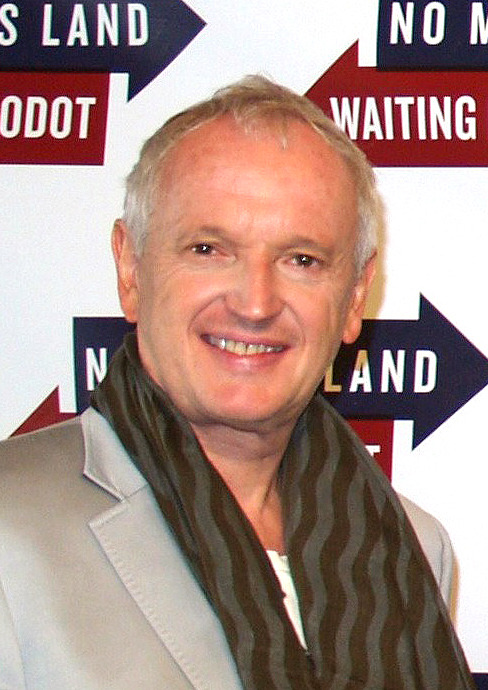
1956 – Sean Mathias is a British theatre director, film director, writer and actor. He was born in Swansea, south Wales. He is best known for directing the film, Bent, and for directing highly acclaimed theatre productions in London, New York, Cape Town, Los Angeles and Sydney. He has also had a notable professional and personal partnership with the actor, Sir Ian McKellen.
Mathias began his career as an actor, making his first appearance on screen in an episode of the cult BBC TV series, Survivors, in 1977 in a small role. In the same year, he played an Irish Guards lieutenant in the film, A Bridge Too Far.
In 1978, Mathias appeared in a production at the Edinburgh Festival Fringe, during which time he met the actor, Ian McKellen, who subsequently became his partner of about nine years.
His acting career continued into the 1980s but his greatest achievements have come in directing and writing. Mathias's play, Cowardice, was produced at the Ambassadors Theatre in London in 1983, starring McKellen. Despite poor reviews, he was undeterred and followed it with Infidelities, A Prayer For Wings, Poor Nanny (1989), and Swansea Boys (1990). His writing also includes a novel, Manhattan Mourning, published in 1988, and the BBC TV film, The Lost Language of Cranes (1992).
In 1999, he directed a revival of Bent, the award-winning play by Martin Sherman that had opened on Broadway in 1979 starring McKellen. Performed as a benefit, this performance featured McKellen, Richard E Grant, Ian Charleson and Ralph Fiennes. After receiving critical acclaim, Mathias directed a full run in 1990 with McKellen alongside Paul Rhys and Christopher Eccleston.
Buoyed by this success, Mathias went on to direct hit shows in both London and on Broadway. Mathias directed his first Stephen Sondheim musical, A Little Night Music, at the National Theatre in 1995, with Judi Dench and Sian Phillips. He worked with Phillips again in 1997, directing her as Marlene Dietrich in Marlene.
Mathias has been based in South Africa since 1997 after visiting the country with the National Theatre in 1994 for a series of workshops. He has continued to direct occasional plays in London, the US and elsewhere.
Despite his focus on theatre direction, Mathias is also known as a film director because of his first - and currently only - feature film, Bent (1997), based on the play that propelled him to success.In 2009 Mathias directed two very different, high-profile West End smash hits: a dream cast revival of Waiting for Godot starring Sir Ian McKellen and Sir Patrick Stewart, and Breakfast at Tiffany's starring Anna Friel.


1965 – Kevin Williamson is an American screenwriter, producer, director and former actor, best known for the horror films Scream, I Know What You Did Last Summer and The Faculty, as well as the popular television series Dawson's Creek and The Vampire Diaries. Williamson's new television show, The Following premiered as a 2012-13 mid-season show on Fox.
He told Entertainment Weekly interviewer Melissa Maerz, "When I was growing up, my mom and dad took me to the Poe museum in Richmond, Virginia. It was a little house downtown, and 'The Raven' was written on the walls. You had to move from room to room to read the whole story. I thought it was the coolest thing in the world."
Inspired by the March 9, 1994, episode of the newsmagazine Turning Point on Danny Rolling, a serial killer in Gainesville, Florida, who preyed on college students, Williamson wrote a horror movie script, originally titled Scary Movie. Its characters had seen many classic horror movies (e.g. A Nightmare on Elm Street, Halloween) and knew all the clichés. Miramax bought the script for $400,000 for their new Dimension Films label in the spring of 1995. Directed by Wes Craven, the film was renamed Scream, and released in The United States on December 20, 1996. It became a commercial blockbuster and critical success—ultimately drawing $173 million in ticket sales worldwide.
Paul Stupin, an executive at Columbia Tri-Star Television, read Scream after the bidding war for the script and was convinced Williamson was just the man to create a television series for his company. The result was Dawson's Creek, a semi-autobiographical tale set in a small coastal community not unlike Oriental. Williamson was the model for the title character, Dawson Leery, a hopeless romantic who is obsessed with movies—especially those of Steven Spielberg. Joey Potter, the platonic girl-next-door, was based on a real life friend of Williamson's when he was young.
Williamson has said that he knew he was gay "as far back as [he] can remember." He came out to his friends and family in 1992.

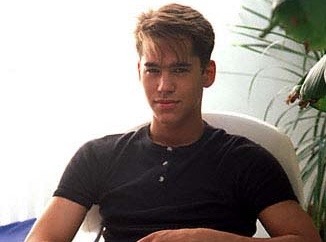
(Click for Full Monty)
1975 – Johan Paulik, born in Slovakia, Czechoslovakia as Daniel Ferencik, is a Czech pornographic film star who makes films exclusively for Bel Ami Productions. Like all stars for Bel Ami, which specializes in gay pornography, he was in his mid-twenties but he looked to be anywhere from 17-19 years old, with little to no body hair, a muscular body, a very boyish face, and a larger-than-average penis (18 cm).
Paulik's career began as a professional dancer. In 1993, he was discovered by American Bel Ami photographer George Duroy in Bratislava and photos were taken of him, which were soon followed by homosexual porn films. He got his first role in 1994 in the hardcore porno Sauna Paradiso, the second in Lukas' Story followed shortly thereafter. In 1997 the erotic illustrated book Photos of Johan was published in Germany.
In the first few years Paulik's hardcore films were not allowed to be sold or rented in Europe, but they have also been available here since 2001.
As part of the appeal of Bel Ami films, Paulik maintains his heterosexuality, proclaiming that he enjoys sex with men not because he is a homosexual, but because in Prague there is a more open-minded attitude about sexuality. It is the alleged appeal of watching "heterosexual" boys have sex with one another that has made his films (including Sauna Paradiso, his biggest seller to date) such huge successes.
He frequently co-starred with Lukas Ridgeston, with whom he is friends off camera.
He now works behind the scenes at Bel Ami as a director, editor and cameraman (through 2010). Although retired as a performer, Johan often cameos in the behind-the-scenes documentaries he films and edits. Often these are compiled for DVD release, such as in the "Johan's Journals" series.

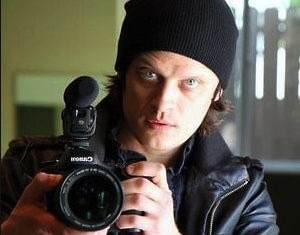
1979 – Steven Greenstreet is an American documentary filmmaker, known for the controversial film, 8: The Mormon Proposition, which was selected to premiere at the 2010 Sundance Film Festival. Currently residing in New York City, he has also worked as a video investigative journalist for The Huffington Post Investigative Fund and a video producer for the US State Department.
The premiere of 8: The Mormon Proposition (2010) at Sundance was met with a lengthy standing ovation despite the intense controversy surrounding it. The film was inspired by ballot measures like California’s "Prop 8," designed to legally prohibit same-sex marriage. Addressing the estimated $22 million Mormons had raised along with internal church documents, the film unravels an extensive campaign carried out by The Church of Jesus Christ of Latter-day Saints (LDS Church) with intent to influence California’s voters.
Contrasting hard statistics with emotionally charged testimonials from gays and families, 8: The Mormon Proposition reveals the detrimental effect of the LDS church’s persistent stance on homosexuality.
The church has declined all of the filmmakers’ requests for interviews; LDS spokesman Michael Purdy has commented on the matter, “We have not seen ‘8: The Mormon Proposition.’ However, judging from the trailer and background material online, it appears that accuracy and truth are rare commodities in this film. Clearly, anyone looking for balance and thoughtful discussion of a serious topic will need to look elsewhere.”


1984 – Antoni Porowski is a Polish-Canadian television personality, actor, chef and model. He is known for his role as the food and wine expert on the Emmy award-winning Netflix series Queer Eye.
Porowski was born in Montreal, Quebec to Polish parents after they emigrated to Canada with his two older sisters. His father is a physician. He grew up speaking Polish, English, and French. He and his parents moved to Glade Springs, West Virginia when he was twelve, and he lived between there and Montreal throughout his high school years before finally returning to Montreal to attend Marianopolis College and then university. His mother and Porowski do not have a good relationship as brought out in season four of Queer Eye.Post-graduation from Concordia University with a bachelor's degree in Creative Arts, Porowski moved to New York City to study acting at the Neighborhood Playhouse School of the Theatre, from which he graduated in 2011. He taught himself to cook by referring to his grandmother's cooking techniques. He is also a close friend of the original Queer Eye’s first season cooking and sommelier Ted Allen who was a mentor.
Upon moving to New York City, Porowski began auditioning for various acting roles. He has stated that being Polish made it difficult for him to find work, which at the time made him consider anglicizing his last name. He has landed roles in movies such as Elliot Loves (2012), Daddy's Boy (2016), The Pretenders (2018), and as the lead officer in a 2014 episode of TV series The Blacklist. Porowski was also featured in the 2015 short docudrama about the Vinnytsia massacre, To My Father, as Adam Bandrowski. The short film was part of the 2016 Cannes Film Festival's Short Film Corner.
In the meantime, he worked in food service to cover his rent, first working as a busboy at a family-run Polish restaurant. He worked his way up in the restaurant industry, working as a waiter and sommelier, eventually managing a Bond Street sushi restaurant. Porowski lives in the same neighborhood as Ted Allen, the original Queer Eye food and wine expert, and current host of Food Network cooking competition Chopped. The two became friends, and for a time Porowski worked for Allen as a personal chef.
In December 2017, it was announced that Porowski would play the role of food and wine expert in the Netflix revival of Queer Eye, which aired in February 2018. The second season of the show was released in June 2018.In April 2018, Porowski signed a deal with Houghton Mifflin Harcourt for his first cookbook, released in Spring 2019. In June 2018, he announced that he would be opening The Village Den, a fast-casual restaurant in New York City's West Village. Additionally, Porowski deals vintage furniture.
Porowski states that his sexuality is "a little more fluid along the spectrum" and that he prefers not to label. He dated Joey Krietemeyer for more than seven years, but the relationship ended in October 2018. He confirmed via Instagram that December that he was dating Trace Lehnhoff. However, the two split after one year of dating. In October 2019, he confirmed via Instagram that he is dating Kevin Harrington.
Porowski and his Queer Eye costar Jonathan Van Ness trolled the internet by setting up a joint Instagram account, pretending to be a couple. Later they confirmed that there was nothing serious to it.
In the Queer Eye episode titled, "Lost Boy", Porowski revealed that he has struggled with addiction issues in the past.


1990 – The Idaho Court of Appeals finds a privacy issue in sex in enclosed restroom stalls.


10 notes
·
View notes
Text
August 4, 2023 Restoration work on the Battleship Texas
"I am 'declassifying' Hunter Miertschin's 'Top Secret' picture from a few weeks ago.

Atlantic Theater Map Declassified
On behalf of our crew, our colleagues at Texas Parks and Wildlife Department's (TPWD) Cultural Resources branch, and OnAim Conservation, I am pleased to announce that the stabilization, conservation, and partial restoration of the Atlantic Theater Map in the Captain's Cabin is complete!
This map of the WWII Atlantic Theater was painted on a bulkhead in the Captain's Cabin after September 1944 (based on references in the map). It shows the ports of call Texas made during WWII (white dots with anchors in them), where she performed shore bombardment (noted by little explosions), national capitals (yellow triangles), and a few surprise discoveries as the map was conserved.
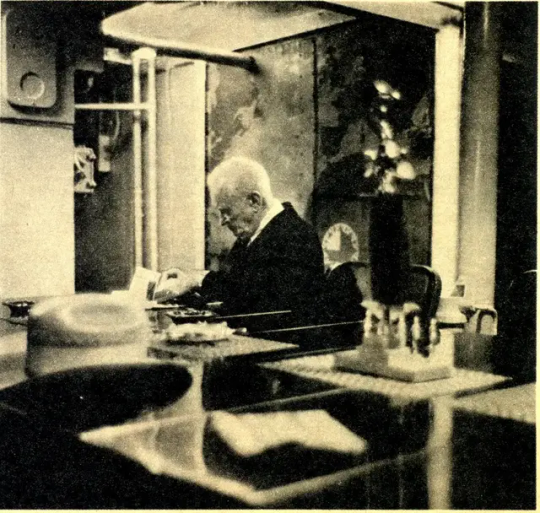
The 1966 newspaper photo of Chief McKeown, with the map in the background. This is the only known photograph of the map prior to it being painted over.
Sometime after 1966 (which is when the only known historic photo of the map was taken), the map along with the rest of the Captain's Cabin was painted white. That act was not great, but not terrible either. What was truly terrible is a window was cut into the bulkhead right in the middle of the map sometime in the late 1970s, after the map and compartment were painted white. We believe that because the map had been painted over and the loss of institutional knowledge of the map, those who made that decision did not know it was there.
Fast forward to around 2000 when the map beings to reveal itself as the white paint begins to flake off and the map is rediscovered during the planning for the Captain's Cabin restoration. When the Captain's Cabin was restored, the window was welded up and the map was partially uncovered exposing the Mediterranean and most of Europe. In 2009, I discovered the 1966 picture of Chief McKeown with the map in the background, which spurred a lot of excitement about what possibly survived. However, due to budgetary constraints we were not able to perform any real conservation treatments to the map.

This is the map in 2002. You can see Italy, Southern France, and the Mediterranean emerging. At left you can see the frame of the infamous window.
The map sat partially uncovered and untouched until last summer. In partnership with TPWD Cultural Resources we hired OnAim Conservation to stabilize the remaining paint on the bulkhead, just prior to the tow to Galveston. This initial step preserved what remained and protected it from any vibrations from the tow and/or shipyard work. It also set the stage for uncovering the rest of the map and recreating the missing sections.

This is the map in 2011. During the 2002-2003 Captain's Cabin restoration, it was partially uncovered. But work stopped out of fear of damaging the map further.
All through July 2023, the incredibly talented husband and wife team of Zak Miano and Ariane Roesch (who own OnAim Conservation), with the expertise and hard work of artist and conservator Bob Pringle, performed the tedious work of uncovering the map by removing the remaining white paint, revealing that much more of the map survived than anyone thought. They also discovered that whoever painted the map, had painted the State of Texas in Africa in burnt orange!

This is the map as it appears today. The gloss is from Damar varnish that was used by OnAim to protect the paint and bad lighting.

Europe afte the remaining remnants of white overpaint was removed and the the destroyed sections of Spain and North Africa were recreated. You can see the explosions where the ship did shore bombardment at N. Africa, Normandy, and Southern France.

We made the decision to use French Morocco as Morocco was a 'protectorate' of France and French Morroco showed on a lot of 1940s maps.
Once the map was uncovered, OnAim added Kati Ozanic-Lemberger to the team to recreate the destroyed section and features of the map. In consultation with TPWD Cultural Resources, it was a unanimous decision to touch up the paint of the surviving sections of the map, fill in and blend in missing areas within surviving sections, and recreate the large missing sections. We made this decision for two main reasons, 1) it would preserve the existing map longer 2) it would allow us to tell the story of what happened to this map. The artistry of OnAim is phenomenal in how they blended the recreated areas of the map with the original, infilled and blended missing patches, and emphasized the surviving features that were being last. The map blew me away, but the skill of these folks was just as impressive.

The big surprise: TEXAS!

The Eastern seaboard of N. America, with all of Texas's Dec 7, 1941 to September 1944 ports of call. Another discovery OnAim made was the remnants of 'North'. THis do not show in the 1966 photo, Referencing period maps, we opted to infill the missing sections of 'North' and create 'North Atlantic Ocean'. As that seemed the most logical as to what was there -there was no 'South'. Because this was largely on the destroyed section we would not be harming the original map.

The faded areas are what survived of 'North'. The more solid and brighter blue is what was infilled. Same with the gray for the oceans.
I also want to add that Ariane, Kati, Bob, and Zach were working directly under the work going on the Signal Bridge. They performed their magic while having to deal with the sounds of needle guns, grinders, hammers, et al, right above their heads and occasionally getting smoked out from welding and cutting smoke that would get sucked into Captain's Cabin. How they kept steady hands and focus amid the normal cacophony of a shipyard environment is astounding.

Custom matching and blending colors

The detail work....

Bob and Katie recreating the destroyed section of the map.

The on OnAm team: Kati, Ariane, Zak, and Bob
As to the future of the map, we plan to have it on exhibit in the Captain's Cabin shortly after we reopen and are planning to incorporate it into an AR experience."
Posted by Travis Davis on the Battleship Texas Foundation Group Facebook page: link
#Battleship Texas#Battleship Texas Foundation#Update#USS Texas (BB-35)#USS Texas#New York Class#Dreadnought#Battleship#Warship#Ship#Texas#Repairs#Restoration
31 notes
·
View notes
Text
Embark on a Multicultural Journey: Join BALAM Dance Theatre for Fiesta Odalan 45! From 18th Century Peru to Bali, Indonesia!
Robin Gilbert and Yumiko Niimi dance El Barreño. Photo Credit: Julie Lemberger
BALAM Dance Theatre (BALAM) opens its 45th anniversary season with the opulent spring showing , Fiesta Odalan 45!, in New York City. The company presents the public showing at Gibney: Agnes Varis Performing Arts Center, 280 Broadway (entrance at 53A Chambers Street), Studio H, New York, New York, on Sunday, May 19…

View On WordPress
0 notes
Text

Thaddäus „Teddy“ Podgorski
(* 19. Juli 1935 in Wien; 16. März 2024)
Er war ein österreichischer Radio- und Fernsehjournalist, Schauspieler, Theaterregisseur und Autor.
Aufgewachsen ist Teddy Podgorski in Wien im 11. Bezirk, Simmering, Am Kanal in den sogenannten Krankenkassenhäusern sowie in Spital am Pyhrn. Sein Vater Thaddäus war ein altösterreichischer, aus Lemberg stammender adeliger ursprünglich polnischer Ulanenoffizier und später Kfz-Werkmeister.
In Deutschland musste er in unterirdischen Stollen mit polnischen KZ-Häftlingen V1- und V2-Raketen zusammenbauen. Ein Onkel von Teddy hatte in Spital am Pyhrn eine Schlosser- und Mechanikerwerkstätte und beschäftigte dort den Vater. Teddys Mutter Henriette war vor dem Krieg Kindermädchen bei einer reichen jüdischen Familie. Bei einem der vielen Triest-Aufenthalte der Familie lernte Henriette ihren späteren Ehemann Thaddäus sen. kennen. Aus der Ehe stammt noch eine Tochter, eine Solotänzerin in Linz.
Teddy Podgorski besuchte das Stiftsgymnasium Admont in der Steiermark, wo er maturierte. Anschließend ging er nach Wien und studierte sechs Semester Kunstgeschichte und Germanistik.
Seine künstlerische Laufbahn begann Teddy Podgorski in Wien auf verschiedenen Theaterbühnen: Erst fungierte er als Statist in der Burg und der Staatsoper und spielte dann auch kleine Rollen in Kellertheatern, im Wiener Konzerthaus, im Parkringtheater, im Theater der Jugend sowie im Volkstheater.
Weil er jedoch nach eigener Aussage beim Theater zu wenig verdiente, wechselte er 1953 zum Rundfunksender Rot-Weiß-Rot. Über den Chef des Aktuellen Dienstes, Heinz Fischer-Karwin, kam er – ohne Einkommen und ohne „Dach über dem Kopf“ – schließlich zum Radio des Österreichischen Rundfunks. Sein erstes Radiofeuilleton machte er an der Universität Wien über einen „Sprachkurs für Ausländer“. Fischer-Karwin war davon begeistert und Podgorski damit „im Radio fix verankert“.
„Aus Übermut“ ging er am 1. Juli 1955 zum neu gegründeten Fernsehen des Österreichischen Rundfunks (ORF), blieb jedoch weiterhin auch beim Radio. Über den ersten Fernsehdirektor, Gerhard Freund, kam Podgorski zum Aktuellen Dienst. Dort wurde er der Erfinder und der erste, sowie damals einzige Redakteur der Zeit im Bild. Bis 1963 war er leitender Redakteur des aktuellen Dienstes.
Die junge Familie Podgorski wohnte zu der Zeit in einer Kellerwohnung im Gemeindebau in der Eroicagasse im 19. Bezirk, „ums Eck vom Molden“, wo auch Helmut Qualtinger seinen Wohnsitz hatte. Nach der Geburt seines ersten Sohnes, seine (erste) Ehefrau war noch im Spital, wurde Podgorski vom Fernsehdirektor Freund aus dem ORF „hinausgeworfen“.
Anlass war ein kritischer Film über Persien und den Schah von Persien, Mohammad Reza Pahlavi, im Vorfeld eines geplanten Staatsbesuchs und der „Märchenhochzeit“ mit Farah Pahlavi (21. Dezember 1959) gewesen, die am 27. November 1959 ausgestrahlt wurde. Der Schah soll deswegen den Staatsbesuch abgesagt haben. (Er besuchte Österreich letztendlich im Mai 1960). „Der Wirbel war sehr groß, die Journalisten wollten sogar einen Generalstreik ausrufen.“ ÖVP-Politiker verlangten am 2. Dezember in einer parlamentarischen Anfrage (an die falsche Stelle) Aufklärung, wie ein Reporter des offiziellen österreichischen Fernsehens „eine jeder diplomatischen Gepflogenheit widersprechende Kritik und Diffamierung des iranischen Regimes und Seiner Majestät des Schahs in unqualifizierbarer Form“ vorbringen könne.
Der FPÖ-Abgeordnete Gustav Zeillinger protestierte am 3. Dezember in seiner Nationalratsrede gegen die Entlassung eines kleinen Angestellten, den man ja extra in den Iran geschickt hatte und dessen Direktor den Sendungsinhalt kennen musste, ohne Disziplinarverfahren. Infolgedessen durfte Podgorski wieder in den ORF zurückkehren.
1967 beendete er eine Reportage über die gegensätzlichen Welten während der Salzburger Festspiele mit den Worten: „Die Hippies rauchen ihre Joints und die Bürger sitzen im Theater.“ Wegen dieser „linken Formulierung“ kontaktierte Generalintendant Gerd Bacher den Chefredakteur Franz Kreuzer und verlangte die Entfernung Podgorskis, denn „er braucht keinen Bert Brecht im aktuellen Dienst.“ Da er jedoch nichts verbrochen hatte, konnte man ihn nicht kündigen. „Ich war dann weißer Elefant, eigentlich der erste und es war mir sehr fad.“ Ab dieser Zeit begann er eigene Sendeformate zu entwickeln.
Von Bacher im gleichen Jahr zum Chefreporter und zum Sportjournalisten gemacht, hatte er An den Boxen und Sportpanorama erfunden. Mit dieser Sendung, nunmehr zu Panorama umbenannt, sei er für die Berichterstatter interessant geworden. Als Mitgestalter holte er sich Walter Pissecker, 1970 bekam er für die Sendung die Goldene Kamera. Von 1968 bis 1971 leitete er das Wiener Aufnahmestudio des ORF für die Eurovision-Gemeinschaftssendung Aktenzeichen XY … ungelöst, die unter der Leitung des Zweiten Deutschen Fernsehens (ZDF) bis heute ausgestrahlt wird. 1972 wurde Podgorski zum ORF-Sportchef ernannt.
Weitere von ihm kreierte und moderierte Sendungen waren Panorama, Seinerzeit („Mister ‚Seinerzeit‘“), Jolly Joker („… wurde verkauft, zurecht, als ein Männermagazin“) und Seitenblicke. Im Lauf der Zeit war er noch kurze Zeit Intendant von FS 1 (heute ORF eins) bzw. Informationsintendant.
1986 übernahm Podgorski von Gerd Bacher für eine Leitungsperiode die Generalintendanz des ORF und wurde von diesem wiederum im Herbst 1990 abgelöst. Als Generalintendant hatte Podogorski die TV-Regionalsierung mit dem Bundesländerfernsehen eingeführt, u. a. die Sendereihe Universum erfunden, sowie 1988[7] die Minderheitenredaktion mit der sonntäglichen Sendung Heimat, fremde Heimat und die Volksgruppensendungen initiiert. Gegen alle diese Sendungen sei seiner Aussage nach das Kuratorium gewesen; wegen der ebenfalls von ihm erfundenen und eingeführten Seitenblicke, hätten sie [das Kuratorium] ihn, weil es angeblich Boulevardfernsehen wäre, hinauswerfen wollen.
In seiner GI-Amtszeit schloss Podgorski erstmals wichtige Verträge mit den Rundfunkanstalten Osteuropas und trieb den Ausbau der Programme für den öffentlich-rechtlichen Gemeinschaftssender 3sat voran.
Vor dem Sommer 1990 unterlag Podgorski der Wiederwahl gegen den aus seiner Sicht politisch wieder erwünschten Gerd Bacher. Während seiner Generalintendanz hatte Podgorski ein Sendeformat Herein – Die ORF Viertelstunde geschaffen, in der er selbst seine Arbeit kommentierte.
Als Filmschauspieler mimte er 1981 und folgend in den Bockerer-Filmen den Gestapo-Agenten und Opportunisten Pfalzner.
Podgorski spielte immer wieder sowohl in Fernsehfilmen aber auch am Theater. Er inszenierte im Theater in der Josefstadt und an den Wiener Kammerspielen und wirkte in Produktionen der Staatsoper, der Volksoper und der Seefestspiele Mörbisch mit.
Nach der ORF-Zeit ist ihm die Schauspielerei zu seinem Hauptberuf geworden. 2003 hatte er einen Gastauftritt in der Fernsehserie Kommissar Rex (Folge: Berühmt um jeden Preis). Noch heute spielt er im Theater in der Josefstadt und auf Bühnen verschiedener Sommerspiele, wie er auch als Theaterregisseur tätig ist. Darüber hinaus betätigt er sich weiterhin als Autor.
Podgorski ist Vater von drei Söhnen, unter ihnen der Regisseur Teddy Podgorski jun., und wohnte von 1960 bis Anfang der 1980er Jahre bei seiner Familie im Döblinger Helmut-Qualtinger-Hof. Gemeinsam hatte die Familie ein Sommerhaus in Gumpoldskirchen, in dem Podgorski ganzjährig lebte, während die von ihm getrennte Familie weiter in der Wiener Wohnung blieb. 1969 lernte er beim ORF seine spätere Frau Margit Hummer kennen, die bei der Sendung Panorama als Editorin arbeitete. 1986 heiratete das Paar. Teddy Podgorski und seine Frau leben in Wien und im Burgenland.
Dem Sportbegeisterten werden Hobbys „als Amateurboxer, Rennfahrer, Flieger, Reiter, Radrennfahrer und Liebhaber englischer Oldtimer“ zugeschrieben. Der engagierte Sportflieger setzte sich in den 1990er Jahren – letztendlich erfolglos – für den Erhalt des burgenländischen Sportflugplatzes Trausdorf bei Eisenstadt ein.
Ich für mich sage ‚Dankeschön‘ für ungezählte Stunden großartiger TV Unterhaltung!
Er hat meinen höchsten Respekt für ein großartiges, für Österreich unglaublich wichtiges, langes Leben! Ruhe er in Frieden....
0 notes
Text

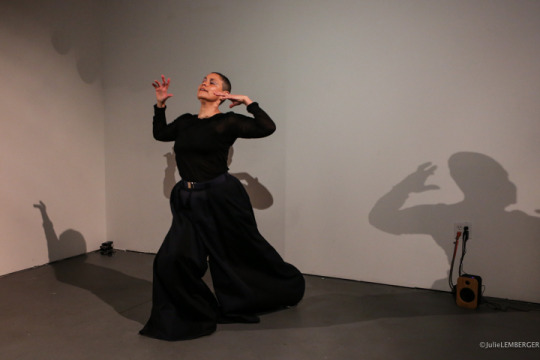
A couple of images from Family Reunion _side2, a solo performance at Chaahama as part of New Dance Alliance WORKSession, March 2023.
More to come from this work and process.
Photo: Julie Lemberger
1 note
·
View note
Text
The Forgotten Victory
The Polish-Soviet War of 1919/20 and the Emergence of Modern Eastern Europe
In the beginning, there is a world-historical collapse. In the end two rebirths. But first things first, from one end to the other.
The February Revolution of 1917 put an end to the centuries-long rule of the Russian Tsars. Nicholas II abdicated on March 2, after which a provisional government took office. It only lasted for a short time, because half a year later the October Revolution took its course and brought the Bolsheviks to power - because Germany had sent the professional revolutionary Vladimir Ilyich Lenin from his Swiss exile to St. Petersburg in April to decide the First World War in the east. Another professional revolutionary from Russia, the Pole Jozef Pilsudski, was imprisoned in Magdeburg in July 1917 by the Central Powers: Because Russia had imploded, cooperation with Poland had lost much of its importance.
In that summer of 1917 their greatest days lay before Lenin and Pilsudski. For Lenin they came in October, Pilsudski had to wait a year longer, because only the end of the war and the defeat of the Central Powers in November 1918 brought Poland's rebirth and a triumphant return to Warsaw. At that time, however, it was completely unclear what the state should look like, of which he was now the head, because there were conflicts with all the neighbors over the borders. In Moscow, the situation for the “Reds” was not much different: counter-revolutionary “White” units were harassing them from all directions. And even if it were possible to survive the attacks, there was still the question of the relationship with the new countries that were springing up like mushrooms on what was previously Tsarist territory - seven of them in the west alone: Finland, Estonia, Latvia, Lithuania , Belarus, Ukraine and Poland.
Among them, Poland quickly proved to be the dominant player.
An army organized by experienced officers and a state system that arose directly from the structures set up by the Central Powers before 1918 permitted foreign policy action that went far beyond mere diplomacy. In the political debate, Józef Pilsudski prevailed against his rivals: Poland should be reborn as a country between the Baltic and the Black Sea and continue the glorious history of this Rzeczpospolita of the 17th century. In the early modern period it had been the largest state in Europe until Prussia, Russia and Austria divided it up in three stages in 1772, 1793 and 1795. Pilsudski raved about this old glory of bygone times, he dreamed of Vilnius and Lemberg, even Minsk and Kiev - and would actually conquer these cities within a few months.
As late as 1918, Poland, the Bolsheviks, Lithuania and the Ukraine were still fighting each other. It was not the defeated who fought here, but the winners. The fall of the Habsburg, Romanov and Hohenzollern monarchies made their nations and their political projects possible. But that is why the First World War in the East did not end in November 1918, but continued until 1921. The banners under which they fought were new. The soldiers stayed the same. Aside from a few enthusiastic volunteers, they were haggard men, grossly underarmed and weary from four years of war, exhausted like the countries and their people. But finally it was about their own cause, no longer about the conflict of outdated empires that had ruled the region for far too long. In this respect, 1918 was a turning point - and again represented a difference from the West, where the guns fell silent and the states continued to exist.
The year 1919 saw the end of Ukrainian statehood, saw Polish troops in Minsk, Vilna and Lviv, but only skirmishes with Soviet units. 1920 brought a war of movement on a front more than a thousand kilometers long. The Poles took Kiev - and thus contributed to the fact that many "whites" now closed ranks with the Bolsheviks to defend the fatherland. The Red Army then counterattacked, driving the Poles 500 kilometers west in just eight weeks. These were the last glory days of cavalry and the first harbingers of modern mobile warfare with tanks and aircraft. The fall of Warsaw seemed certain, and suddenly it was no longer inconceivable that Bolshevism would spread to Germany. But the decisive blow failed, Pitsudski just so managed a victory that would go down in history as the miracle on the Vistula. The Soviet dream of world revolution was over, Lenin had to develop the doctrine of “communism at home”.
And then a peace agreement in neutral Riga. No victory for Poland, much less land gain than hoped for, but no defeat either. The new republic had not become communist. But she stood alone against the Soviet Union, which was founded in 1922: there was no longer a Ukraine, Belarus was Soviet, and Lithuania was an enemy. The Ukrainian case was particularly tragic because there was a large anti-Bolshevik movement under Symon Petjura. Poland had made an agreement with ukraine, but ultimately for entirely self-interested reasons. When peace came, Pilsudski dropped his ally. Ukraine had been crushed between West and East. Even Lithuania, traditionally one of two parts of the Rzeczpospolita, was alienated from Poland, for the neighbor had conquered its capital, Vilna. The victorious hegemon found itself isolated in foreign policy.
In Moscow, after the Riga Treaty, the Bolsheviks were firmly in the saddle of a new Russian empire and plotting revenge, particularly the military leader blamed for the failure at Warsaw: Joseph Stalin. The actual commander-in-chief, Mikhail Tukhachevsky, was, therefore, able to return to Moscow as a shining hero, despite his failure. In the "Great Terror" of 1937, Stalin made him one of the first to be eliminated. The peace order represented a gigantic mortgage in every respect. Half of Eastern Europe had become the battlefield of a war that belonged as much in the 18th as in the 20th century. Hundreds of thousands of dead soldiers and civilians were to be mourned, vast areas devastated, and once again the Jews were seen - as they had been for ages - as the cause of all evil. However, anti-Semitism had been enriched by a further, decisive component: Jews were now also regarded as traitors to the people and supporters of communism. This later made the Holocaust considerably easier for the Germans, because other nations also regarded their neighbors as enemies.
The fragile peace in Eastern Europe lasted just 18 years. And it was Germany that ended it. The National Socialists admired Pisudski for his victory over Bolshevism and for his internal political assertiveness. But when Poland didn't want to be available as a junior partner against the Soviet Union, hatred resurfaced. Germany attacked on September 1, 1939, and on September 17 the Red Army also advanced into Poland. World War II far surpassed the horrors of the Polish-Soviet War. Its after-effects remained unmistakable. In a pact with Hitler, Stalin secured the part of Poland that the Soviets had had to cede in Riga in 1921. And in 1945 at Yalta, he did not deviate from this so-called Curzon line. He argued to Churchill that it was based on an Allied proposal made in 1920 and that Soviet Russia, then in its weakest hour, was forced to relinquish territory. The Kresy, those ethnically very heterogeneous and always contested regions between Poland and Russia, changed hands once more. The Polish-Soviet War still casts its shadow today. Moscow and Warsaw argue about the treatment of the soldiers captured at the time; Poland discusses national minorities and historical monuments with Lithuania, Belarus and Ukraine; Poles disagree as to whether Pilsudski's actions against Soviet Russia did not strengthen the real enemy - Germany - and thus indirectly contributed to the defeat in 1939. At the same time, he is celebrated as the father of modern Poland and as the savior of all of Europe from Bolshevism. The “Miracle on the Vistula” is seen as a defense of Western Christian civilization and as another ignored Polish sacrifice for the West.
And so the events of the years after the First World War are still topical, perhaps even more topical than ever. Last but not least, today's conflict in and around Ukraine can be seen, with certain justification, as a continuation or a new edition of the fighting of that time: Even then there was a country divided between West and East that its respective allies made into a battlefield and so ultimately brought about the demise of its statehood. Whether that will happen again is hard to say. In any case, this book is not about the future, but about the past. It tells of a forgotten victory in this country, without which the history and present of East Central Europe cannot be understood.
Unlike so often in German historiography, the focus is not on Russia. Attention is primarily focused on Poland and Ukraine, and only secondarily on the other conflict parties in the Polish-Spjetian war. Crucially, for Russia, the conflict was just one chapter of the far larger civil war - and not necessarily the most important. The perception of the other participants could not have been more different - and it still is today: For them it was a question of to be or not to be, to exist as a viable state or just as a minority in another country. The clashes of 1919/20 are therefore part of the Polish and Ukrainian national identity.
#history#world history#polish soviet war#war history#world war one#translation#translated#book recommendations#literature#history books#translation by me#german to english#translated from german
1 note
·
View note
Text
July Newsletter

PAYBACK
The Official Newsletter of the Wisconsin People's Party
AGENDA
MEETING: July 10, 7:00PM by Zoom.
(Zoom link will be sent on July 10.)
Call to order and approval of minutes: https://shorturl.at/bQT37
Welcome and introductions
Discussion of the climate crisis with Jill Mitchler of CCL
Current Events/Calendar
Update on WPP certification as a political party in Wisconsin
Thank you and adjournment
Hey, psst!
Would you do us a favor and answer one (1) question about our next election?
Oh, Yeah!
Meet our President, Mike Bernhard:
A Good day to everyone,
My name is Mike Bernhard and I am the President of the Wisconsin Peoples party. A little about my background. I am 77 years old, born in Burley, Idaho, raised in Burley, Las Vegas Nevada, and northern Santa Barbra county, Calif. I am a retired union electrician (IBEW), AFT educator several locals including Madison and Milwaukee. My wife is a retired AFSME member. I served 6 years in the United States Marine Corps 1964-1970. For the Iast 50 years I have been involved in Justice and labor struggles, peace activism, and the back to the land movement in the 80’s. My wife and I currently live in Madison.


STUDENTS! Come to our meeting to talk Student Debt
The Wisconsin People's Party sees the student debt crisis as a major problem in the US. Rising college costs and declining government funding has caused pain for young people and is discouraging them from going to college. We are wasting an entire generation of talent. The WPP supports forgiving student debt, making college affordable, and opposing privatization of education. See who the culprits are in this video: https://www.youtube.com/watch?v=B3MgUyIT7WU
Steering Committee
Fanny Behrens
Mike Bernhard
John Lemberger
Dean South
Contact
Website
withepeople.net
0 notes
Text
Dance and the environment
Image Credits: Photo (left) of Kathy Westwater by Julie Lemberger; Photo (right) of Fresh Kills by Marina Zamalin.
There is a challenge implicit in this presentation of Kathy Westwater’s new work for Gibney. Can you also visit the other related events and make this a trifecta of dance-&-activist happenings? It seems a worthy — and worthwhile– undertaking. Moundscapes is a world premiere…

View On WordPress
0 notes
Text
Upcoming EVENT: 1455 SummerFest on July 14!
Upcoming EVENT: 1455 SummerFest on July 14!
I will be taking part in the 1455 Literary Arts Summer Festival, on The Imagination of Resistance: Community and Solidarity in Speculative Fiction panel, along with dave ring, Izzy Wasserstein, RB Lemberg and Victor Manibo.
When: July 14, 2022, 8pm EST
Where: Register online here

View On WordPress
0 notes
Photo
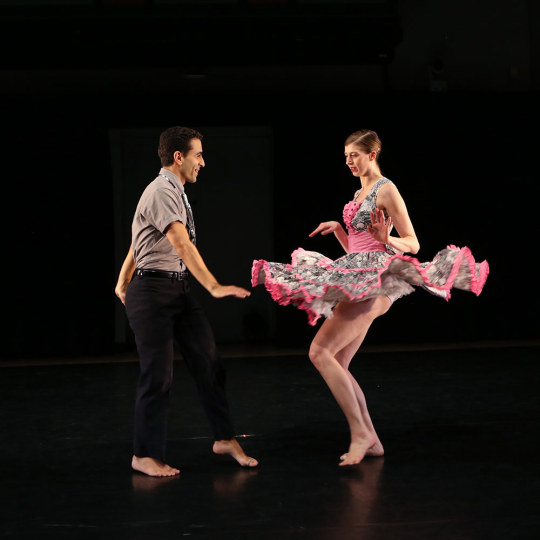
Lindsey Jones and John Eirich in Rockefellers, Dance Heginbotham, Harkness Dance Festival, March 2018. © Julie Lemberger.
John Eirich and Jones are the space-age couple: both wearing accessories that look as if they are made of tin foil – he a tie, she a bow on her poofy pink cocktail dress. The couple allude to automated, de-personalized aspects of life
58 notes
·
View notes
Photo

corey scott-gilbert photographed performing as shahryar in alonzo king’s scheherazade by julie lemberger
132 notes
·
View notes
Photo

Ross Katen, left, and Mark Willis in a reconstruction of José Limón’s “Dialogues” at the 92nd Street Y. Photo by Julie Lemberger.
#dialogues#ross katen#mark willis#josé limón#julie lemberger#dance#ballet#dancer#danseur#tanzer#bailarín#ballerino#ballet men#male dancers
6 notes
·
View notes
Text

Leopold Weiss (Muhammad Asad) was an Austro-Hungarian-born Muslim journalist, traveler, writer, linguist, political theorist, diplomat and Islamic scholar. Asad was one of the most influential European Muslims of the 20th century.
Leopold was born on 2 July 1900 to a Jewish family in Lemberg, Galicia, then part of the Austro-Hungarian Empire. He was a descendant of a long line of Jewish rabbis; however, his father, Akiva Weiss, broke from tradition and became a lawyer.
Leopold received a religious education and was proficient in Hebrew from an early age, as well as familiar with Aramaic. He studied the Jewish Bible or Tanakh, the text and commentaries of the Talmud, the Mishna and Gemara, also delving into the intricacies of Biblical exegesis and the Targum.

During his youth, Weiss developed an ever-deepening engagement with Islam. He finally embraced the faith in 1926 in Berlin, and went on to become one of the most famous Muslim intellectuals of the 20th Century, authoring a number of books on Islam, including his famous translation of the Holy Qur'an into English. He wrote:
"Islam appears to me like a perfect work of architecture. All its parts are harmoniously conceived to complement and support each other; nothing is superfluous and nothing lacking; and the result is a structure of absolute balance and solid composure."
237 notes
·
View notes
Text
Listing my TBR! Italicised books I own. Last updated - 30 December 2023. Current total - 81.
Future releases that will be day-one reads (2)
Muir, Tamsyn - Alecto the Ninth (The Locked Tomb #4), due 2024 - *HEAVY BREATHING*
Tingle, Chuck - Bury Your Gays, due 16 July 2024
Series (13)
Butler, Octavia E - Parable of the Sower; Parable of the Talents (Earthseed #1-2) - classic cli-fi
Leckie, Ann - Ancillary Justice; Ancillary Sword; Ancillary Mercy (Imperial Radch #1-3) - wildly award-winning AI-heavy space opera
Mejia, Tehlor Kay - We Set The Dark On Fire; We Unleash The Merciless Storm (We Set The Dark On Fire #1-2) - queer dystopia
Wells, Martha - Artificial Condition; Rogue Protocol; Exit Strategy; Network Effect; Fugitive Telemetry, System Collapse (The Murderbot Diaries #2-7) - one of the best robot protags around. Most novellas, aside from Network Effect
Standalone Fiction (60)
Anthology - Bioluminescent - lunarpunk
Anthology - Bound In Flesh - trans body horror
Anthology - Fighting For The Future - solarpunk meets cyberpunk
Anthology - It Keeps Getting Better - positively queer sci fi
Anthology - Longsummer Nights - paranormal romance, much of it queer
Anthology - Luminescent Machinations - queer bodies and technology
Anthology - Made to Order: Robots & Revolution - as does this
Anthology - Other Terrors - inclusive horror
Anthology - Out There: Into The Queer New Yonder - futuristic queer SFF
Ancrum, K - Icarus - thief gets his heart stolen
Angus, Callum - A Natural History Of Transition - short story collection about transitioning and transformation
Aoki, Ryka - Light from Uncommon Stars - found family in space, ‘Good Omens meets A Long Way To A Small Angry Planet’
Baldree, Travis - Bookshops & Bonedust - set in the same ‘verse as Legends & Lattes!
Basu, Samit - The City Inside - dystopia in a future Dehli
Basu, Samit - The Jinn-Bot of Shantiport - many robots
Candon, Emma Mieko - The Archive Undying - tfw you’re the favourite of an AI god
Carey, MR - The Book of Koli - planty post-apoc
Chen, Mike - Vampire Weekend - vampire babysits mortal relative
Clarke, Susanna - Piranesi - self-discovery through Spooky Houses
Dunn, Mark - Ella Minnow Pea - does fascinating things with language
Edgmon, HE - The Witch King - features a trans witch king of a fae kingdom
Fellman, Isaac - Dead Collections - queer vampire library romance
Fowley-Doyle, Moira - Eyes Guts Throat Bones - nice messed-up short story collection
Gibson, William - Neuromancer - literally the first cyberpunk
Hackwith, AJ - The Library of the Unwritten - unfinished books in Hell and the characters that inhabit them
Harlan, Kathryn - Fruiting Bodies - queer horror about mushrooms
Hoffman, Ada - The Outside - AI-heavy plot with autistic protag
Ishiguro, Kazuo - Klara and the Sun - robots!
Jackson, Shirley - We Have Always Lived In The Castle - gothic and mysterious
Jamieson, Trent - Day Boy - what happens when vampire servants grow up
Johnson, Alaya Dawn - The Summer Prince - radical art and queer, polyam romance
Kelly, Anita - Love & Other Disasters - lighthearted queer romance during a cooking competition, NB PC
Lake, Joss - Future Feeling - future magic with trans protags
Lamb, Sacha - When The Angels Left The Old Country - queer Jewish historical fantasy
Lemberg, RB - The Unbalancing - got it on the shelf!
Lukens, FT - In Deeper Water - princes and pirates
Mandel, Emily St John - Sea of Tranquility - time travel and metaphysics
McLemore, Anna-Marie - Lakelore - dreamy lake fantasy with two NB and neurodiverse protags
McQuiston, Casey - One Last Stop - time-travelling queer romance
Newitz, Annalee - The Future of Another Timeline - time travelling SFF
Pinsker, Sarah - A Song For A New Day - illegal concerts in dystopian settings
Polydoros, Aden - The City Beautiful - mystery with Jewish mythology
Quills, Coffee - Blasted Research - poly relationship in a post-apoc wasteland
Robinson, Kim Stanley - Aurora - AI generation ship
Roehrig, Caleb - The Fell of Dark - queer vampire mystery
Scalzi, John - The Kaiju Preservation Society - protecting ‘the universe’s largest and most dangerous panda’
Shelley, Mary - Frankenstein - you know what this one is about
Skrutskie, Emily - Bonds of Brass - the author basically went "what if I wrote Poe/Finn but it wasn't terrible?" and I deeply respect that
Sonderby, Kaia - Failure to Communicate - xenolinguistics with an autistic protag
St Hogan, Carter - One or Several Deserts - collection of queer bodies on the margins
Sterling, Isabel - The Coldest Touch - queer vampire + psychic romance while also solving mysteries
Stephenson, Neal - Snow Crash - if Neuromancer started cyberpunk, Snow Crash codified like... a lot of it
Thomas, Morgan - Manywhere: Stories - Southern queer stories
Weir, Andy - Project Hail Mary - listen I goddamn loved The Martian
White, Andrew Joseph - The Spirit Bares Its Teeth - author has owned my ass since Hell Followed With Us
Wigmore, Rem - Wolfpack - sequel to Foxhunt
Wilde, Oscar - The Portrait of Dorian Gray - technically this is SFF
Wilkes, Ally - All The White Spaces - mystery in Antarctica, features trans PC
Wong, Khan - The Circus Infinite - circus on the moon, ace MC
Wuehle, Candice - Monarch - former beauty queens vs the deep state
Nonfiction (6)
Anders, Charlie Jane - Never Say You Can't Survive - storytelling when the world is on fire
Gay, Ross - The Book of Delights: Essays - optimistic and hopeful
Nezhukumatathil, Aimee - World of Wonders - the natural world is neato
Pollack, John - The Pun Also Rises - nonfiction entirely about puns this is a requirement
Pullman, Philip - Daemon Voices - on crafts
Sheldrake, Merlin - Entangled Life - mushrooms!
8 notes
·
View notes
Photo




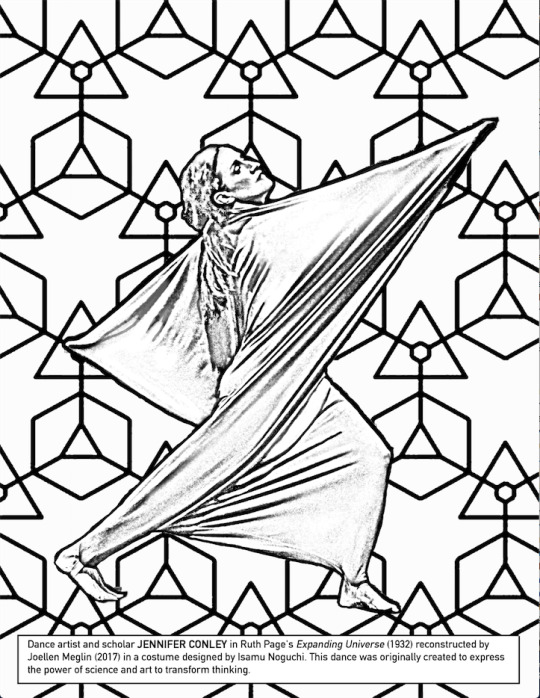

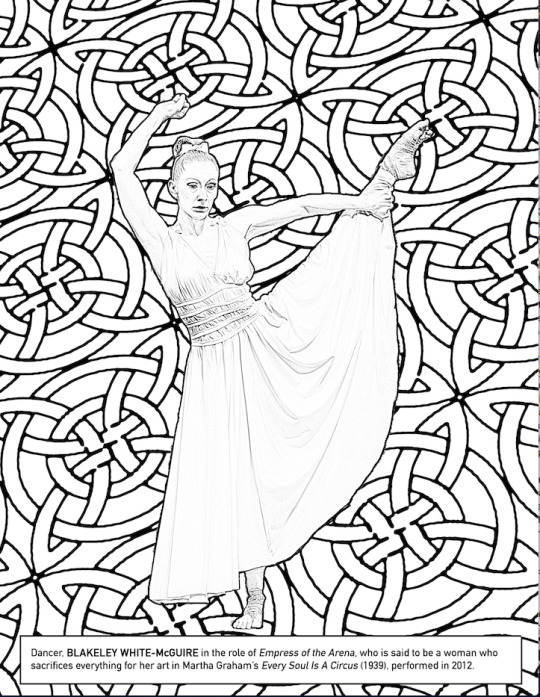

Modern Women- 21st Century DANCE - A Coloring Book by Julie Lemberger
All illustrations created are derived from dance photography, by renown photographer, Julie Lemberger. They were created from dance performances and dance rehearsals during the first two decades of the 21st Century. Some dances pay homage to early 20th Century dance artists and others are creating something entirely new.
This coloring book is an out growth of work done in an artists workshop that emphasizes one-on-one mentoring, artist-to -artist. It was the brainchild of dancer / teacher / poet, Cori Kresge. She calls her workshop series: PlayingWithMatches because she invites you to be matched with another artist to give each other feedback and support.
Cori started this workshop at the beginning of the pandemic lock-down, and this project was on a list of projects I wanted to do - Cori selected this one to embark upon. Since than I have reached out to more than 40 dancers and choreographers to see if they wouldn’t mind being in my coloring book. I was overwhelmed with the amount of positive responses to the idea, as well as the positive response to the images themselves. It has been a big task - far bigger than I’d anticipated. However, I have grown immeasurably in my artistry, and my Photoshop skills have greatly improved. I’m getting nearer to publishing it - to become a hard copy coloring book to purchase and color and to give as gifts to yourself - while you learn about these amazing women who are leaders and their genre of art: dance - the most ephemeral of the art forms - to this I bring ephemera!
Onward and more later.
Thanks to all the WOMEN / WOMYN / WOMXN who made this possible.
Julie Lemberger
#dance#dancephotography#dancenyc#modernwomen#moderndance#modernballet#coloringbook#justaddcolor#illustration#dancehistory#julielembergerphotography#julielemberger
2 notes
·
View notes